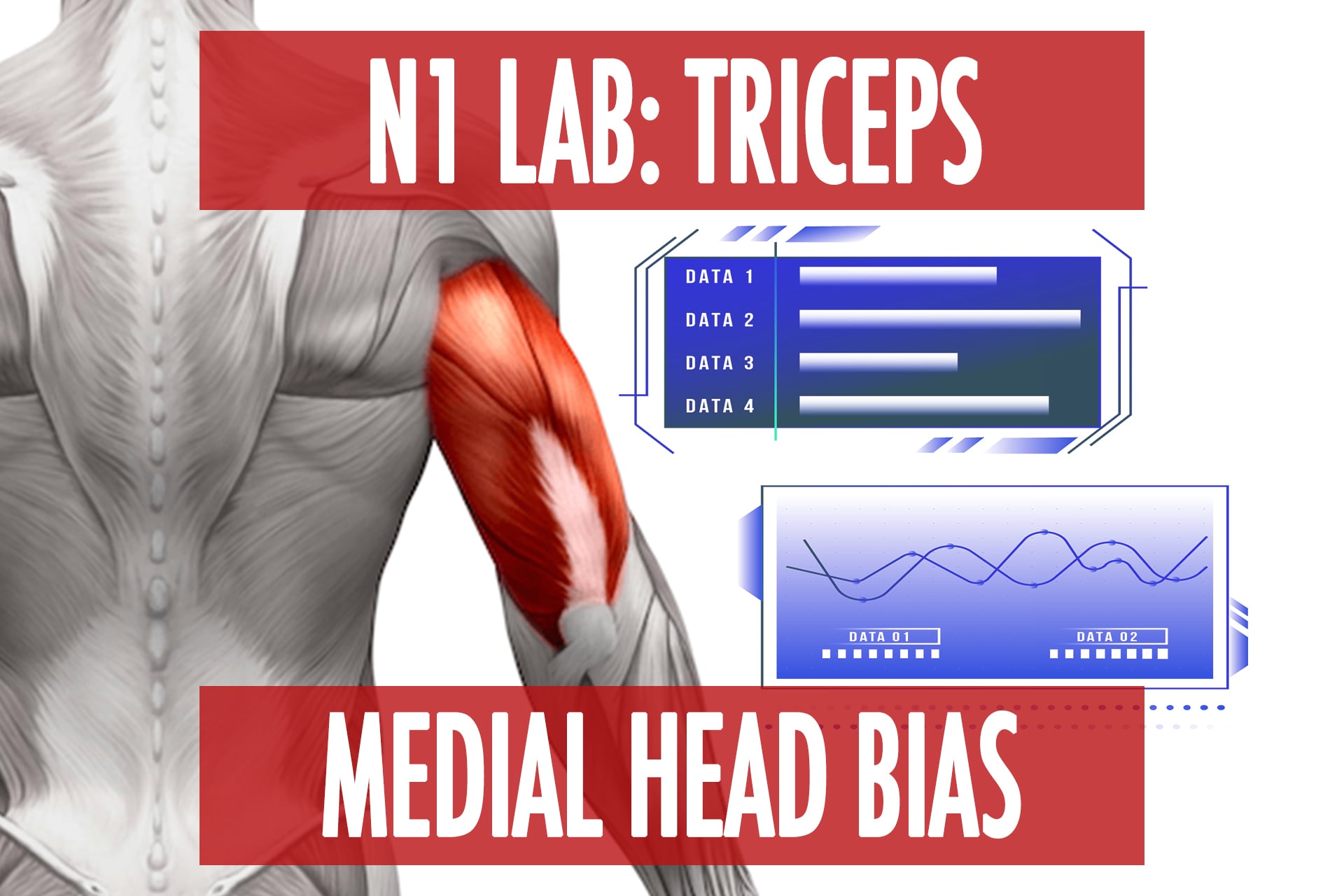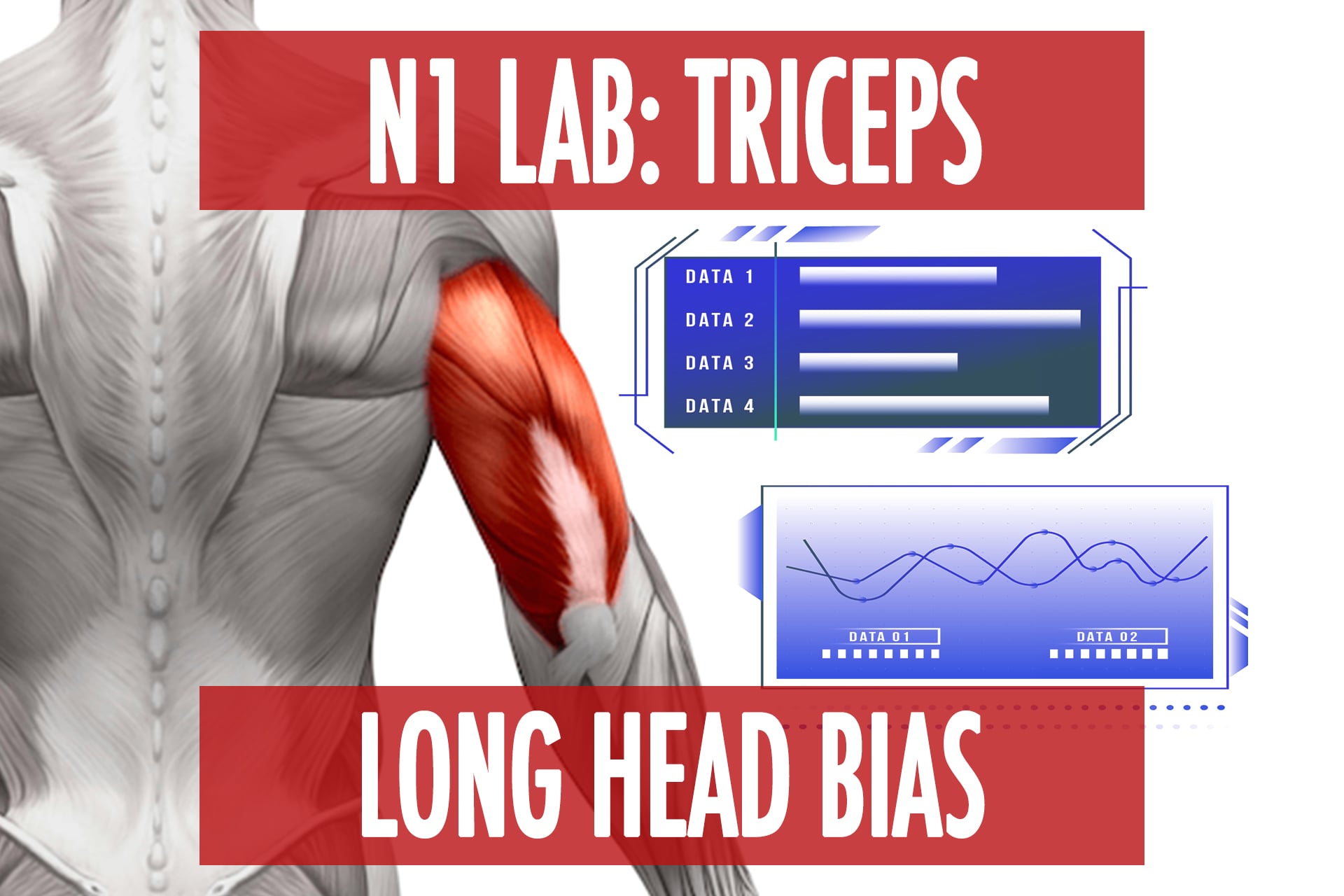N1 Lab: Triceps Lateral Head Bias
n1 training
How to bias the lateral triceps, both in shortened and lengthened exercises.
I’ve explained the fascial connection of the lateral head, that is responsible for it having shoulder position influence several times, so let’s just focus on the actual data here that stands in its own.
The lateral head shows a greater bias when doing extensions in an abducted shoulder position for full shortening, and reaching across the body adducting for the lengthened position. So it’s lined up when the humerus is more in the transverse plane with some relative internal rotation. The videos are easier to take in than the description.
In each case I posted the chart showing the difference between the 3 heads in the respective positions, followed by a comparison of just the lateral head across the other exercises we tested.
There’s a lot of limits to EMG when just comparing means for a single muscle. Our approach is to compare the relationship between all synergistic muscles in a motion, which can help us see how the nervous system changes its bias among exercises.
I think this is the most valuable way to use EMG, and gives us practical training information. We don’t have data to say what the magnitude of difference these positions make on hypertrophy still. But as I will repeatedly say, we are finding the best possible options to bias these tissues, so you’re not really taking any risk by implementing them as long as you still apply volume and effort into your training to the same degree, and follow the principles of using short vs lengthened bias movements to suit your goals.
Learn more about exercise analysis, setup, and selection in our Biomechanics Course
Learn how to apply your biomechanical knowledge to writing workouts with our Program Design Course
Have A Question On This Content?
Please Log In to Submit Your Question
Tricep Extension Grip
videoAnatomy & Biomechanics Biomechanics Execution and Technique FREE TrainingN1 Lab: Triceps Medial Head Bias
videoAnatomy & Biomechanics Biomechanics Execution and Technique FREE Instagram Lab Experiments TrainingN1 Lab: Triceps Long Head Bias
videoAnatomy & Biomechanics Biomechanics FREE Instagram Lab Experiments Training
Popular Pages
Learn & Train With Us
Add N1 Training to your Homescreen!

Please log in to access the menu.


